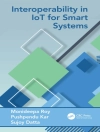If you have ever hiked up a steep hill to reach a viewpoint, you will know that sensing can involve the expenditure of effort. More generally, the choice of which movement an intelligent system chooses to make is usually based on information gleaned from sensors. But the information required to make the motion decision may not be immediately to hand, so the system . first has to plan a motion whose purpose is to acquire the needed sensor information. Again, this conforms to our everyday experience: I am in the woods and don’t know which direction to go, so I climb up to the ridge to get my bearings; I am lost in a new town, so I plan to drive to the next junction where there is sure to be a roadsign, failing that I will ask someone who seems to be from the locality. Why, if experiences such as these are so familiar, has the problem only recently been recognised and studied in Robotics? One reason is that until quite recently Robotics research was dominated by work on robot arms with limited reach and fixed in a workcell.
Gregory D. Hager
Task-Directed Sensor Fusion and Planning [PDF ebook]
A Computational Approach
Task-Directed Sensor Fusion and Planning [PDF ebook]
A Computational Approach
Bu e-kitabı satın alın ve 1 tane daha ÜCRETSİZ kazanın!
Dil İngilizce ● Biçim PDF ● ISBN 9781461315452 ● Yayımcı Springer US ● Yayınlanan 2012 ● İndirilebilir 3 kez ● Döviz EUR ● Kimlik 4679304 ● Kopya koruma Adobe DRM
DRM özellikli bir e-kitap okuyucu gerektirir












